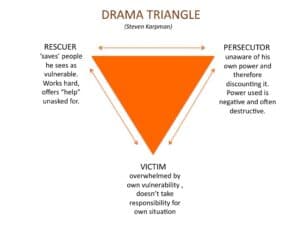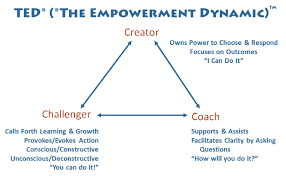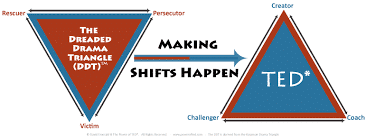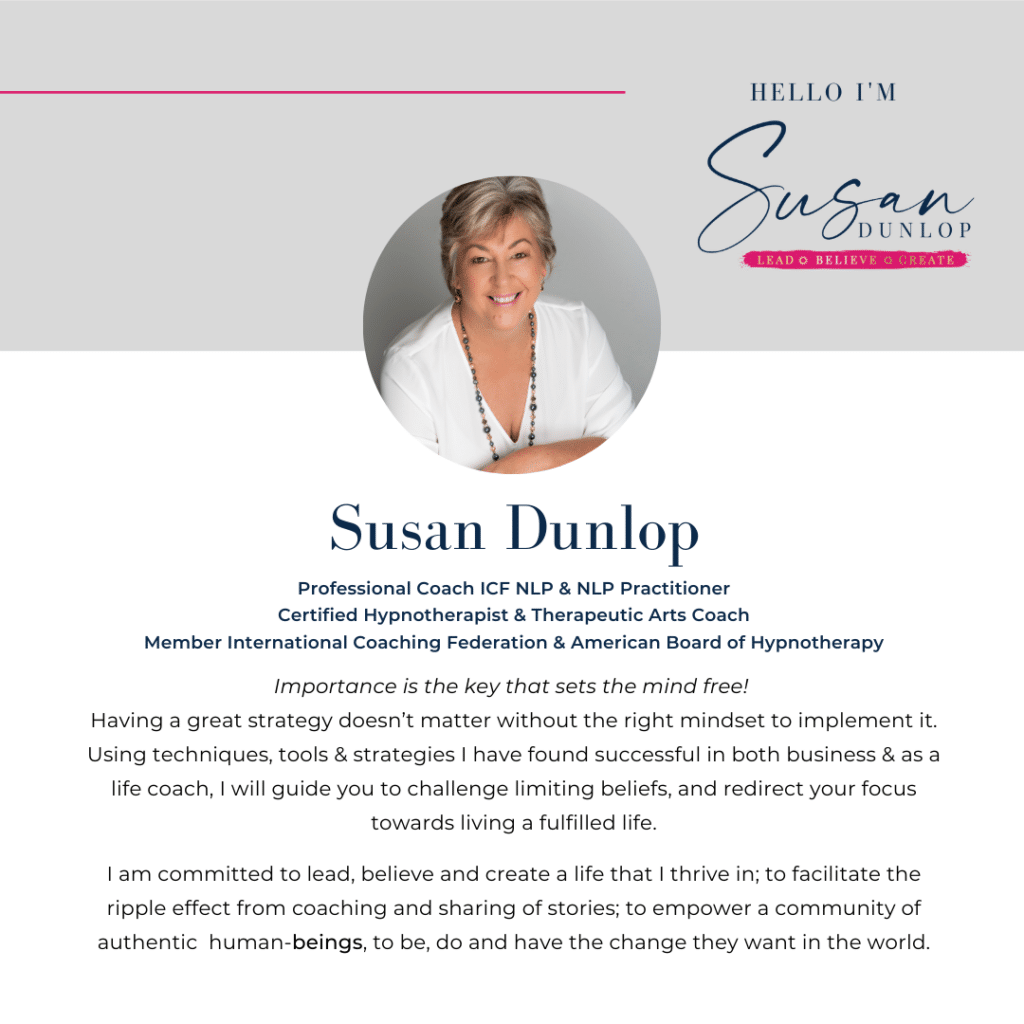Crocodiles in the creeks; sharks at the beach; stingers in the shallows; snakes in the grass; red-backed spiders under the stairs; scuttling cockroaches are everywhere!
Some or all of these wee nasties are guaranteed to set off our GO switch. Taking us from perfect peace to GO… RUN…. I mean NOW in a flight, flight or freeze response kind of way, in terms of how we have a human being’s desire to survive!
Not that I’m talking about any of those scary Aussie beasties.
In reality, we all know that not too many of us will ever need to actually RUN, SWIM, LEAP or SQUEEK about most of them. Maybe one, but not all of them!
What I’d like to share is something I became familiar with back in circa 2004. It was at the very beginning of my time of change in business and also when I began my personal development journey.
At that time, Tom and I went from ‘just us’ in our new growing business to having people come on board to cover the crazy hours we’d been working.
I vividly recall thinking that ‘people will solve my problems’. ‘I’m so grateful, blessed, thankful’. ‘Did she actually say she wants to take over the night shifts?’ ‘Hell yeah, the price is right, come on down!!!’
Yet, oh so very quickly, instead of giving me more time to focus on loving up the clients, the nurses and continuing with growth strategies, I felt like people quicksand was lapping my ankles. I slowly and surely sank lower and lower wondering ‘WTF, this isn’t how it works, is it? I just want to do my business well, like we had been doing, albeit tiredly, til now.‘
We had recruited via reaction – absolute rookie error no. 1.
The idea to cover the hours would be tabled at our weekly meeting, but we didn’t have processes or policies or training in place to support the notion. We stumbled around without the step-by-step strategy that was necessary. We hadn’t paused to truly document the outcome we were really aiming for.
We recruited from a problem-centred reactionary space.
Here’s the problem – here’s the fix. Now there’s another problem, oh, here’s another fix, and so on.
In 2004 I was shown an article that explained the problem I was seeing, that I couldn’t apply terminology to. That is, outside of the 4-letter word business owner terminology that was running through my head.
Putting it lightly, it was a pure s*#t time in the early days of business, that halted the growth we’d been experiencing for certain. It had me in my head, feeling stressed around the clock, even though I was now off duty! I’d fallen into old coping mechanisms that weren’t helpful, til I could find a new better plan to resolve the issues we were having.
The article was about Steven Karpman’s Dreaded Drama Triangle.
The Dreaded Drama Triangle is described as a social model of human interaction, especially when conflict is involved.
A ‘thing’ as ominous and scary as all those sharp teeth and slithery beasties mentioned in the first paragraph.
I’ll share with you why the Dreaded Drama Triangle begins with the word “Dreaded”. It is quite literally very scary and oh so freaking real, in so many lives and circumstances.
In the diagram below, the essence of the Dreaded Drama Triangle is set out. It was a concept developed by Steven Karpman in the 1960s.
The Dreaded Drama Triangle can be played out at work, at home, in intimate relationships, across whole families, in sports teams, clubs, wherever humans exist, it’s a possibility!
In the Dreaded Drama Triangle you will see there are 3 key roles, all of which are focused on PROBLEMS; all of which create the reaction of ANXIETY towards the problem. Then we REACT to the ANXIETY, that is a REACTION to the PROBLEM.
We can spin through every one of the 3 roles in seconds, all by ourself even.

We might otherwise play one role, and someone else or something else plays the other 2. If we don’t get the result we want when we’re immersed in one role, we can easily ‘show them a thing or two’ and shift to another role or back and forth, to get the reaction we’re desiring.
Bottom line though, the problem is never going to be fixed this way!
The roles of the Dreaded Drama Triangle I will explain go like this:
The VICTIM role: the victim feels powerless and at the mercy of life events. He or she may not take personal responsibility, finding it easier to blame others.
The PERSECUTOR role: the persecutor is a person or life event that functions as an adversary or “thorn in the side”, leaving VICTIMS in their wake.
The RESCUER role: the rescuer is always looking for VICTIMS to save, even when others are responsible or could do it themselves. Rescuing makes them feel needed.
The Dreaded Drama Triangle is not a healthy triangle to live in.
I also found out, way back then, and from further research, that it is very much central to how families who have histories of any kind of abuse or addictive generational histories operate nearly around-the-clock.
That’s a very tiring cycle to be stuck in; a non-constructive way to communicate; and one that will lead to burn-out. Also the potential is there to lean out to reach for band-aids in terms of numbing, distractions, anger, cause breakdowns of relationships, and addictions increasing.
Yet the unhelpful cycle will still continue, with all of that layering added for good measure.
Hoping, with the layers to have thickened our skin so deeply, we cannot feel the anxiety, is not a realistic outcome. It is very much people’s daily realities, but not a good helpful or healthy outcome by any shape or form.
Does any of that look or feel familiar?
Have you found yourself in any of these three roles, either in your relationship, within your family or business settings?
I could see all of those roles, ebb and flow, with the way we recruited for our business early on.
I know I could personally spin through the cycle of feeling into all 3 roles within minutes. I was the victim (poor me… of my own recruitment process). Then I’d feel into the persecutor role (coming at problems in an unhelpful way. For example, when we say something in a way that doesn’t make someone else feel good, that’s a form of the persecutor role coming out). Next, before I knew it, I’d feel bad and slip into my rescuer cloak ‘let me fix this’ (and the weakness of the system just got weaker).
It only resolved when I paused to breathe, see it for what it was, and address behaviours as just that, not the person but their behaviours.
By doing so, we could all get back on with business… or someone would pretty much need to ‘step off the bus (of our business). Sometimes, the reality is, our business bus is not the right bus for them, really, is it now?’ That was also a powerful something that I learned around the same time from Jim Collins, author of “Good to Great”.
Once you feel any one of these roles within you, it’s very obvious that that’s what you’re doing. So we do actually have a choice to stop it continuing right?
It also becomes blatantly obvious which roles others around you are best playing too.
Hot tip: it’s very unhelpful in resolving the DDT issue to point out to someone that ‘you’re just being a persecutor’ or ‘stop being such a victim’. Best intentions, possibly, however I learnt that it wasn’t the kind way, at both ends of that kind of comment, very quickly!
What’s really good to know is that, there is no need to beat yourself up for having played out these roles. They are all there, within us all as human beings, given our survival strategies of fight, flight, freeze. If you didn’t know there is a 4th survival strategy, there is – it’s called appease.
So, it’s OK to accept that, as it is, even if it’s not been a completely helpful strategy for what you were dealing with at the time. Acknowledge that and move on.
- It is, as I see it, particularly if we’re choosing to be role models to others, absolutely our responsibility, once having accepted it as it is, to gain increased awareness of how the dreaded drama triangle roles occur, or how we operate as individuals, or within our teams and relationships.
- Then equally, absolutely, positively, it is a high priority to begin to spot the situations arising and as they do, to press ‘pause’.
In the ‘pause’ we can do what Steven Covey says: find that space between reaction and response. In that way we can choose a proactive response about the path forward and in how we choose to operate and to live our life.
What I found that I want to share… I say as I’m bouncing around, just a bit excited here!!!
The founder of The Empowerment Dynamic (TED*Works), David Emerald, author of the Power of TED, defined 3 additional roles that are focused on positive outcomes and opportunities and that is so much more me!
In the Power of TED, David shares that he had an epiphany back in the 1980s.
He was sitting and contemplating the role of Victim, and asked the universe, ‘so what is the alternative to the victim role?’ to which he had the immediate response: ‘it is the creator role’.
The TED triangle was born and it is the antidote to the Dreaded Drama Triangle (see the diagram below).

The CREATOR role: The creator is the opposite to the victim and is characterised by owning responsibilities and exercising choices for positive outcomes.
The CHALLENGER role: This is a role that’s hard to adopt, people fear it sometimes because it makes us feel like ‘the bad cop’; however, it is an extremely valuable role to adopt and play out in life and in business. The Challenger is the opposite to the persecutor role and is a powerful motivator towards positive change.
The COACH role: Not talking only in terms of ‘certified’ coach, as anyone can play this role of Coach, certified or not. The Coach is the opposite of the Rescuer role, and becomes a skilled asker of clarifying, powerful questions that inform change and help us move forwards, rather than spin in that cycle of problem-stuckedness!
I have since completed coaching studies with David and his wife, master certified coach, Donna Zajonc, at The Empowerment Dynamic (TED*Works) in the US. Training that allows me to coach towards outcomes utilising the 3 Vital Questions methodology.
I did this not just for my practice of coaching, but also for my own self, to have an awareness of where I fall into those roles, from time to time. Knowing that, it now allows me to pause and hold that ‘role’ in the palm of my hand. Quite literally, I imagine it as a thing, I’m holding in my hand, out away from my body, to be inspected in the light.
That way I see it separate to myself as a behaviour that I no longer need. We are not labelled as the roles, they are roles that we play out, our behaviours we fall into, that we play out.
Moving on from that initial awareness and training in the alternative triangle to the Dreaded Drama Triangle, I plan to become a certified trainer in TED*Works’ 3 Vital Questions – transforming workplace drama.
What I experienced as a rookie, tired, new business owner, in managing people, I am certain I’m not alone in. I’m only too happy to help others, in life or in business, stop the rot or turn the drama dial down. Having empathy for what it feels like to be going through that, together with a new level of awareness, married with skills learnt, help me co-create outcomes with my clients effectively and get back on with what’s important.
As a professionally trained life coach, and with the additional coach training in TED, I now have the tools within my utility belt to take you or even your business team through a step-by-step process of making a shift away from the dreaded drama triangle reactionary roles.
With new awareness, exercises, tools, we will use it, and you will breathe out, and feel lighter. You will feel like you are quite literally now ‘a light not a judge’ and a ‘role model, no longer a critic’. That’s also one of my favourite terms of Steven Covey from his book “The 7 Habits of Highly Effective People”. You will not only be a role model, you will be the catalyst for positive change in life, business, and for others’ lives too.
I’ll leave you with this to ponder:
- Find the role you recognise in yourself on the Dreaded Drama triangle.
- Reflect upon how this role negatively affects you and others.
- Now find the opposite role on the Empowerment Dynamic triangle.
- What would it look like to focus more of your time and energies there?
It’s worth a try!
Wouldn’t you rather experience empowerment rather than drama?
Contact me if you’d like to “Make Shifts Happen”, via a 10-session coaching package, where we’ll unpack all of this. We’ll see, without judgment, how it plays out in your own life and/or in your business. Knowledge is powerful. However, practice is then the key to making this become the new way you lead your life, in all roles that you play. The “Make Shifts Happen” booking button is below if you’d like to go straight ahead and book in. There are 4 spaces currently on offer at 25% discount. That is $1350 for 10 week’s of 1 hour 1-to-1 sessions, rather than the usual price of $1800 including GST. PAYMENT is not immediately required at the same time as booking your space right now. We will discuss payment options in our intro chat once I receive your request for a space.

This is also perfect to bring into your organisation, in terms of teamwork.
Again, I have the tools and coaching skills so that over 1-year of sessions with yourself as the leader. Together as a team, you will ‘Make Shifts Happen’ towards positively impacting your business at all kinds of levels, including the all-important bottom line!
Check out my tiered corporate team coaching packages for details by clicking the Programs and Pricing link below. We can work with that structure depending on the number and level of team members you have. That, and the “Make Shifts Happen” program content, together possibly, in order to build a package to suit your needs.
Click here: PROGRAMS AND PRICING
You are most welcome otherwise to contact me today via the Contact Form below. I will be in touch to talk with you through any questions you might have.
Take care,
Susan Dunlop


